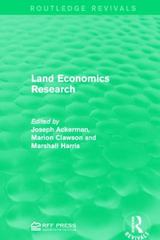Question
Consider a consumer who begins in period 0, with a stock of non-human wealth Subscript[k, 0] (ownership of physical capital). The consumer - known as
Consider a consumer who begins in period 0, with a stock of non-human wealth Subscript[k, 0] (ownership of physical capital). The consumer - known as the representative consumer in macroeconomics - is assumed to live forever. In each period t,t=0,1,..., she has 1 unit of time that she supplies in-elastically on the labor market at the wage rate Subscript[\[Omega], t]. The market rate of interest in period t is Subscript[r, t]. The present value of the stream of labor income \!\(
\*SubsuperscriptBox[\((
\*SubscriptBox[\(\[Omega]\), \(t\)])\), \(t = 0\), \(\[Infinity]\)]\(,\)\) which is the stock of her human wealth, is
Subscript[h, 0]=Subscript[\[Omega], 0]+Subscript[\[Omega], 1]/(1+Subscript[r, 1])+Subscript[\[Omega], 2]/((1+Subscript[r, 1])(1+Subscript[r, 2]))+...+Subscript[\[Omega], t]/((1+Subscript[r, 1])(1+Subscript[r, 2])...(1+Subscript[r, t]))+...
The sum of her human wealth and non-human wealth is then given by Subscript[k, 0]+Subscript[h, 0].
Let Subscript[c, t]>= 0 be her consumption in period t,t=0,1,... The present value of the stream of consumption Subsuperscript[(Subscript[c, t]), t=0, \[Infinity]] is
Subscript[c, 0]+Subscript[c, 1]/(1+Subscript[r, 1])+Subscript[c, 2]/((1+Subscript[r, 1])(1+Subscript[r, 2]))+...+Subscript[c, t]/((1+Subscript[r, 1])(1+Subscript[r, 2])...(1+Subscript[r, t]))+...
Let u[c] denote her utility in a period, when her consumption in that period is c. Suppose that \[Delta],0<\[Delta]<1, is the factor the consumer uses to discount her future utilities. The problem faced by the consumer is
Subscript[max, Subsuperscript[(Subscript[c, t]), t=0, \[Infinity]]] Subsuperscript[\[CapitalSigma], t=0, \[Infinity]] \[Delta]^t u[Subscript[c, t]]
subject to the inter-temporal budget constraint
Subscript[k, 0]+Subscript[h, 0]=Subscript[c, 0]+Subscript[c, 1]/(1+Subscript[r, 1])+Subscript[c, 2]/((1+Subscript[r, 1])(1+Subscript[r, 2]))+...+Subscript[c, t]/((1+Subscript[r, 1])(1+Subscript[r, 2])...(1+Subscript[r, t]))+...
Solve the representative consumer's problem. In answering this question, assume the following functional form for the single-period utility function: u[c]=Log[c].
Step by Step Solution
There are 3 Steps involved in it
Step: 1

Get Instant Access to Expert-Tailored Solutions
See step-by-step solutions with expert insights and AI powered tools for academic success
Step: 2

Step: 3

Ace Your Homework with AI
Get the answers you need in no time with our AI-driven, step-by-step assistance
Get Started


